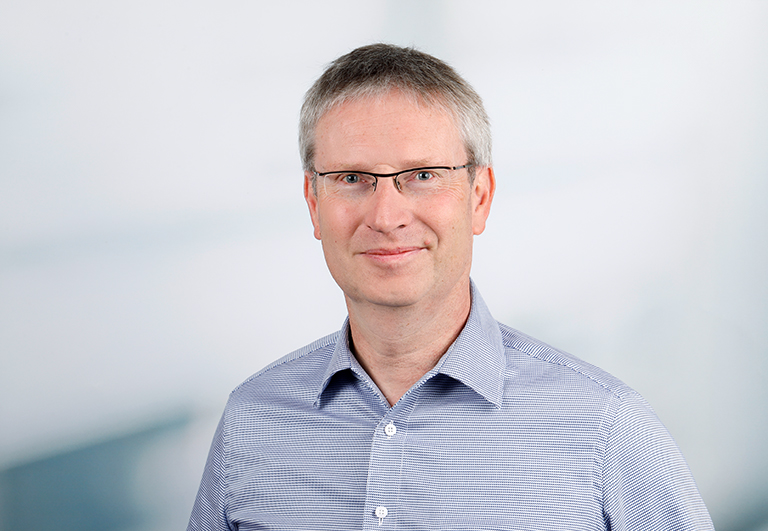As part of a nationwide 6G research hub, scientists at the Radio Frequency and Microwave Research Group are looking into radiation exposure from mobile communications. In the 6GEMini project, they are researching scenarios and concepts for measuring and minimizing mobile phone immissions in the 6G network.
Researchers at TU Ilmenau are working on future communication technologies in 6G mobile technology
![[Translate to English:] stock.adobe.com/WrightStudio](/unionline/fileadmin/_processed_/c/6/csm_Bild_6_G_f05eadc009.jpg)
Data transmission rates of up to several terabits per second and latency times of just a few microseconds - that's what the 6G mobile network promises. While the 5G mobile communications standard is currently still being rolled out across Germany, scientists at TU Ilmenau are already researching the next generation of mobile communications: In two 6G research hubs of the Federal Ministry of Education and Research, Open6GHub and 6GEM, they are helping to develop the mobile communications system of the future.
At the Thuringian Innovation Center for Mobility (ThIMo), Dr. Christian Bornkessel, a research associate at the Radio Frequency and Microwave Research Group, is working on the effects of mobile phone radiation on the human body in the 6GEM subproject "6GEMini" and is developing concepts and measures to minimize radiation exposure, as Dr. Bornkessen explains:
While our current mobile communication standards GSM, LTE and 5G operate in a frequency range of up to 3.7 gigahertz, with 6G we are on a much higher scale of up to 300 gigahertz. These higher frequencies have a very different effect on our bodies. We therefore want to find out how we can measure this mobile radiation and how we can keep it as low as possible.
Researchers measure radiation intensity from 6G base stations and mobile terminals
So far, little is known about the effects of mobile phone radiation in the millimeter and submillimeter range on our health, but researchers already know: The penetration depth of the emissions decreases at higher frequencies. For example, if you hold your cell phone to your ear while making a call via the GSM mobile network, the radiation penetrates a few centimeters into your body. If it were a 6G-capable smartphone, it would only penetrate to the outermost layer of the skin, explains Dr. Christian Bornkessel. In order to expose future 6G users to as little mobile phone radiation as possible, Dr. Bornkessel is conducting immission studies. To this end, the TU Ilmenau is participating in a consortium in which various research institutions have joined forces as part of the 6GEM project. Using computational models and laboratory tests in the absorber chamber at ThIMo, the researchers measure the radiation intensity of 6G base stations and mobile terminals, compare different network concepts and make recommendations on how to achieve the lowest possible mobile radiation. The starting point of the investigations is the question of whether the exposure metrics known from the conventional so-called "sub-6GHz" frequency range can also be transferred to the higher 6G frequency range and are covered by the current limit value concepts for protecting the population from high-frequency electromagnetic radiation. Furthermore, it will be investigated how and with which technique the radiation emitted by 6G devices can be reliably measured.
Subsequently, the developed measurement concepts are to be tested in practice. The consortium has test sites near Aachen and Duisburg at its disposal for this purpose. When the 6GEMini project is completed in 2025, the TU Ilmenau's research will serve as a basis for setting up the 6G infrastructure in compliance with radiation protection requirements, as Dr. Christian Bornkessel says:
By helping to develop the 6G exposure measurement technology and validating it through practical tests, we will provide the first reliable data for the electromagnetic immissions to be expected during the expansion of the 6G network.
6G research hubs at the TU Ilmenau
The TU Ilmenau is involved in two 6G research hubs of the Federal Ministry of Education and Research. In the Open6GHub, scientists are working on the development and implementation of intelligent communication networks and the next generation of mobile communications, 6G. In the 6G Research Hub for Open, Efficient and Secure Mobile Communications Systems 6GEM, research partners coordinated by RWTH Aachen University are developing a holistic 6G mobile communications system, from hardware to software, that provides a flexible network infrastructure. In addition to the TU Ilmenau, the TU Dortmund University, the Ruhr University Bochum, the University of Duisburg-Essen, the Fraunhofer Institute for High Frequency Physics and Radar Techniques, the Fraunhofer Institute for Microelectronic Circuits and Systems, the Fraunhofer Institute for Material Flow and Logistics, the Max Planck Institute for Security and Privacy and the Friedrich Alexander University Erlangen are involved in the hub.
Contact
Dr. Christian Bornkessel
Radio Frequency and Microwave Research Group


